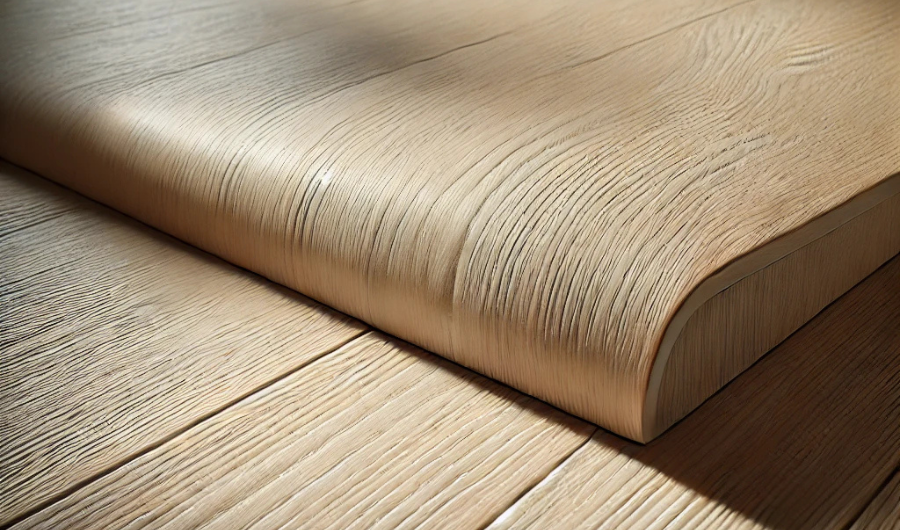White oak flooring is a popular choice among both homeowners and designers due to its durability, timeless appeal, and versatility. White oak, known for its distinctive grain patterns and warm tones, provides both aesthetic and functional benefits, making it ideal for a wide range of home styles, from rustic to contemporary. This article discusses the characteristics of white oak flooring, as well as its benefits, types, and maintenance tips, to assist you in determining whether it is the best flooring choice for your home.
1. What Makes White Oak Flooring Unique?
White oak (Quercus alba) is a hardwood native to North America that has long been admired for its toughness and resilience. Its wood has a tight, closed grain with few knots, creating a smooth, uniform appearance. White oak’s natural color ranges from light beige to medium brown, but it takes stains well, allowing for a wide range of finishes.
Key Characteristics of White Oak
- Density: White oak is more resistant to moisture and decay than many other hardwoods due to its high density and lack of porous structure.
- Grain Pattern: The grain is mostly straight, with some distinctive swirls and rays that add depth and visual interest.
- Color Variability: White oak has a natural, warm tone that varies slightly but is consistent enough to complement both modern and traditional interiors.
2. Types of White Oak Flooring
White oak flooring comes in a variety of styles, each with its own aesthetic and installation methods. Here’s an overview of the most common types available:
a. Solid White Oak Flooring
Solid white oak boards are constructed from single pieces of wood, providing unparalleled durability and longevity. They can be sanded and refinished repeatedly, making them a long-term investment. Solid boards, on the other hand, can expand and contract in response to changes in humidity, making them best suited for areas with stable indoor climates.
b. Engineered White Oak Flooring
Engineered white oak is made up of a top layer of real white oak bonded to several layers of plywood. This structure makes it more stable under different humidity and temperature conditions. Engineered white oak is an excellent choice for basements, kitchens, and other areas subject to moisture changes.
c. Wide Plank White Oak Flooring
Wide plank flooring has broader boards that highlight more of the wood’s natural grain, creating a sense of openness and elegance in the space. Wide planks can make rooms appear larger, and they are particularly popular in contemporary and farmhouse-style interiors.
3. Benefits of Choosing White Oak Flooring
White oak flooring offers numerous benefits, ranging from aesthetic versatility to functional advantages.
a. Timeless Appeal and Versatility
White oak’s neutral tones and subtle grain make it adaptable to a variety of design styles. Whether you want a classic look or a sleek, modern feel, white oak can improve the overall appearance of your home.
b. Durability and Longevity
White oak has a high Janka hardness rating, which indicates that it can withstand heavy foot traffic, scratches, and dents. Its toughness makes it ideal for families, pet owners, and high-traffic areas.
c. Ease of Staining
Unlike some other hardwoods, white oak absorbs stains evenly, allowing homeowners to personalize the appearance. From light, Scandinavian-inspired finishes to rich, dark stains, white oak can work with almost any color scheme.
d. Eco-Friendly Choice
White oak is a sustainable choice because it is widely grown and harvested in North America. Choosing white oak from responsibly managed forests helps to promote sustainable forestry practices.
4. Comparing White Oak to Other Popular Flooring Options
While white oak is a great choice, it’s important to compare it to other common flooring options like red oak and maple to see what makes it unique.

| Feature | White Oak | Red Oak | Maple |
| Grain Pattern | Straight, subtle swirls | More prominent, wavy | Smooth, even |
| Color Range | Beige to medium brown | Reddish to pinkish hues | Light, cream-colored |
| Hardness | 1360 (Janka rating) | 1290 | 1450 |
| Staining Ability | Excellent | Good | Difficult (blotchy) |
| Suitability | Modern, rustic | Traditional | Modern, minimalist |
5. Popular White Oak Flooring Finishes
White oak flooring’s versatility is enhanced by the variety of finishes available, each of which highlights a different aspect of the wood’s beauty.
a. Natural Finish
A natural finish highlights the wood’s natural color and grain, creating a light, airy appearance. This finish is popular in Scandinavian and minimalist decors.
b. Gray or Whitewashed Finish
Gray and whitewashed finishes provide a soft, neutral look that is ideal for modern or coastal-style homes. These finishes can also help to hide minor scratches and flaws.
c. Dark Stained Finish
Dark stains, such as espresso and walnut, create a dramatic, elegant look for white oak, making it suitable for traditional or transitional designs.
d. Matte or Satin Finish
Matte and satin finishes are low-gloss, making them ideal for homes with children and pets because they hide visible scratches and footprints.
6. Installation Considerations for White Oak Flooring
Choosing white oak flooring is only one part of the equation; proper installation is critical for durability and performance.
a. Acclimatization
Before installation, white oak should be acclimated to the conditions in the home. This process usually takes a few days to ensure that the wood adjusts to the indoor temperature and humidity levels, lowering the risk of expansion or contraction after installation.
b. Installation Method
Depending on the type of white oak flooring, it can be installed in several ways:
- Nail-down: Common for solid hardwood flooring.
- Glue-down: Often used for engineered floors.
- Floating: Suitable for engineered floors and allows for some movement, making it ideal for areas with fluctuating humidity.
c. Subfloor Preparation
A clean, dry, and level subfloor is required for a stable and uniform installation. This can help prevent future squeaking and buckling issues.
7. Caring for Your White Oak Floors
White oak floors can last for decades with proper maintenance. Follow these steps to keep your floors looking their best:
a. Regular Cleaning
Dust and dirt can scratch the surface of your floors, so it is recommended that you sweep or vacuum them daily. Use a microfiber mop to avoid using too much water.
b. Preventative Measures
Placing rugs in high-traffic areas, putting felt pads under furniture legs, and encouraging people to take off their shoes can help prevent scratches and dents.
c. Avoid Harsh Chemicals
Harsh chemicals can damage the finish, so use pH-neutral cleaners designed specifically for wood floors.
d. Refinishing
Even the most durable white oak can wear over time. Solid white oak can be sanded and refinished several times, whereas engineered white oak may have fewer refinishing options.
Final Words
White oak flooring is an excellent choice for homeowners who want a combination of durability, beauty, and versatility. Its neutral color, durability, and ability to accommodate various stains and finishes make it a timeless addition to any home. Whether you prefer a natural, rustic look or a sleek, modern style, white oak flooring will meet your needs and elevate your space for many years.

